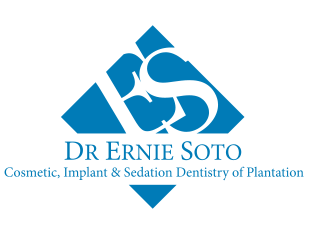Dental veneers in their original form first appeared almost a century ago, when Dr. Charles Pincus, a Hollywood dentist, hit upon this way of enhancing the smiles and looks of film stars. He fixed temporary cosmetic surfaces to teeth, but at the time had no way to fix them permanently.
In the late 1960s, Dr. Michael Bunocore pioneered adhesive dentistry. He scored teeth with a mild acidic solution that formed a stable bonding surface. In 1982, J.R. Calamia and R.J. Simonsen evolved Dr. Bunocore’s techniques to the application of porcelain veneers.
Stunning Hollywood smiles, cosmetic repairs, teeth whitening, and orthodontic alignments became available to anyone willing to pay for them.
Well, all good things have a history, and typically keep evolving to improve more and more. Today, porcelain veneers rank among the most trusted and popular procedures in cosmetic dentistry.
What are Dental Veneers?
Dental or porcelain veneers or dental porcelain laminates are sliver-thin, customized surfaces of advanced medical-grade ceramic, porcelain or resin composite. They bear great resemblance to natural tooth enamel. These shells are permanently bonded to the front of teeth to change their color, shape, size, or alignment.
When Are Veneers Required?
Dental veneers are typically sought to address structural or cosmetic issues:
- Discoloration due to smoking, caffeine, or procedures like root canal
- Medications like tetracycline or other drugs
- Excessive fluoride
- Resin fillings
- Worn, chipped, cracked or broken teeth
- Misaligned, uneven, or irregularly shaped teeth
- Gapped teeth
Who is a Candidate for Dental Veneers?
Only a skilled cosmetic dentist can fully determine whether an individual is suited for dental veneers. He will base his decision on a physical examination to evaluate the condition of the existing teeth and gum health, along with medical and dental history. If he deems the candidate as unsuitable, he or she can also recommend alternative treatments.
Suitable candidates should:
- Have good overall periodontal and oral health.
- Have sufficient, healthy natural enamel, as some will be removed.
- Be meticulous about oral care and hygiene.
- Have specific yet realistic cosmetic goals and expectations.
- Any tooth decay, gum disease and infections need to be treated first.
Patients who have bruxism (habitual grinding of teeth and clenching of jaw) may be disqualified unless underlying causes can be cured, and stronger grade restorations can be constructed.
The Procedure
Fitting dental veneers usually requires three to four trips to the dentist.
FIRST APPOINTMENT: Consultation, Diagnosis, and Treatment Options.
Describe your concerns and desired results. Your dentist will discuss your medical and dental history; examine teeth and gums. He will offer detailed information; explain the procedures and their benefits and disadvantages.
SECOND APPOINTMENT: Measurements and Assessments.
Numerous X-rays, teeth impressions, and photographs will be taken. No drilling or filing should happen at this stage.
THIRD APPOINTMENT: Temporary Veneers.
Injections or sprays will numb each affected tooth. The dentist will file away a thin layer of the front and bottom of your teeth. Any gum reshaping will be done at this time. Fitting, bite, and comfort will be tested. More impressions will be taken so that the new veneers can be made to the right specification. You will wear these temporary veneers for about 2 weeks.
FOURTH APPOINTMENT: The Final Fitting
The process is similar to temporary veneers. These will be removed under anesthesia. The natural teeth will be cleaned, dried, and prepped for the porcelain veneers. The veneers will be placed, fitted, filed and tested numerous times before being bonded onto the natural teeth.
Advantages of Dental Veneers
- They give a natural appearance.
- Porcelain is well tolerated by gum tissue.
- They are stain resistant.
- Veneers offer an easier alternative to crowns.
- Disadvantages of Dental Veneers?
- The process is irreversible.
- More costly than composite resin.
- Chips and cracks are not usually repairable.
- Tooth may be more sensitive to hot and cold foods and beverages.
- Veneer color cannot be altered once in place.
- Though rare, veneers can dislodge and fall off, if care is not taken.
- Teeth with veneers can still experience decay.
- Veneers are not a good choice for individuals with unhealthy teeth/gums.
- Individuals with bruxism are poor candidates for porcelain veneers.
- Veneers last between 7 and 15 years and need replacement.
- Veneers range in cost from $1,000 to $2,000 per tooth. The cost is not generally covered by insurance.
If you feel you are a good candidate for dental veneers or want more information, please call Dr. Ernie Soto at (954) 368-6264. Dr. Soto specializes in providing pain free dental care, including implant and cosmetic dentistry. Call today, or request an appointment online.
